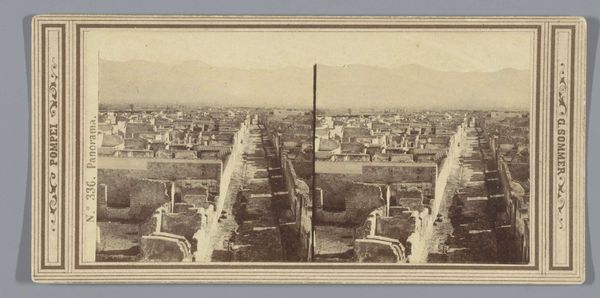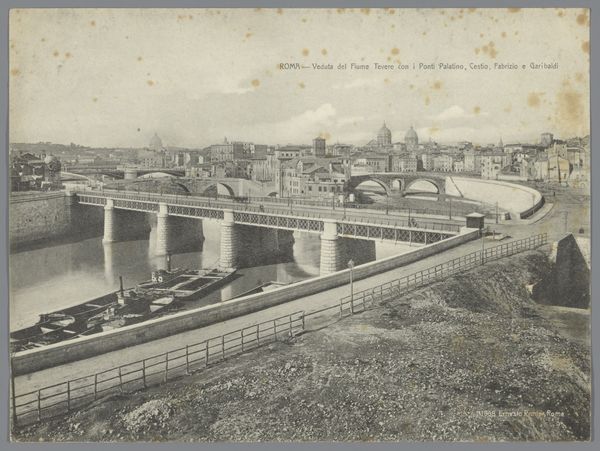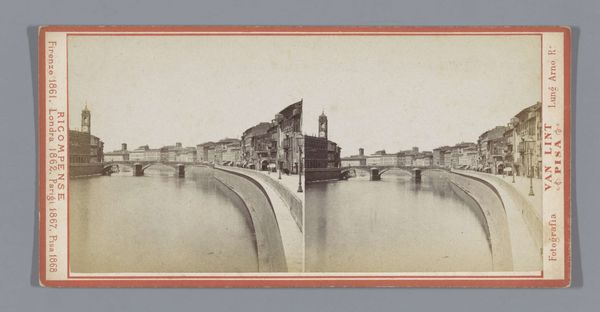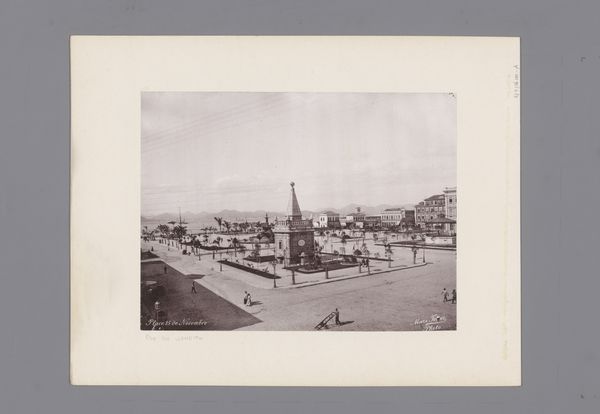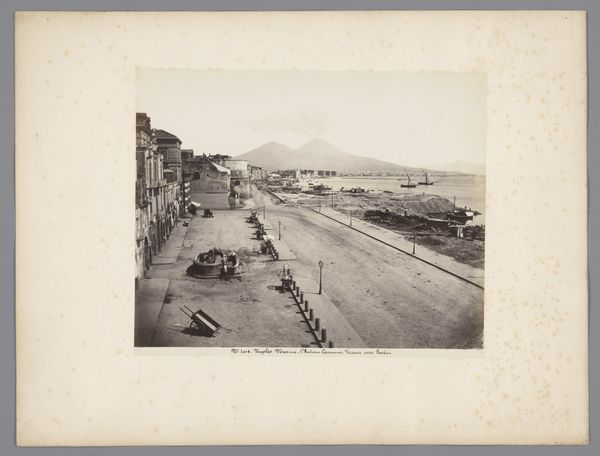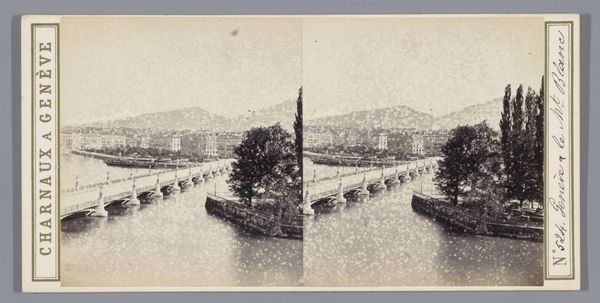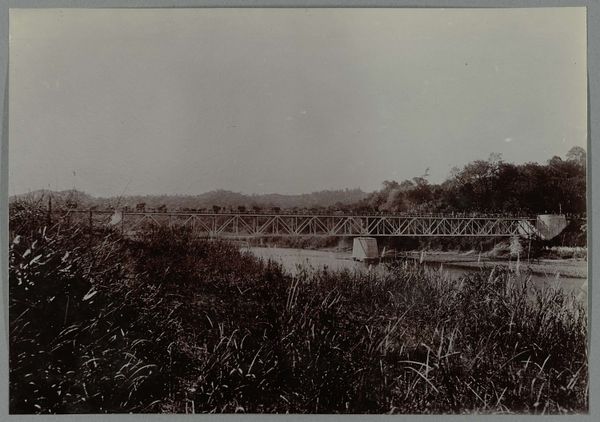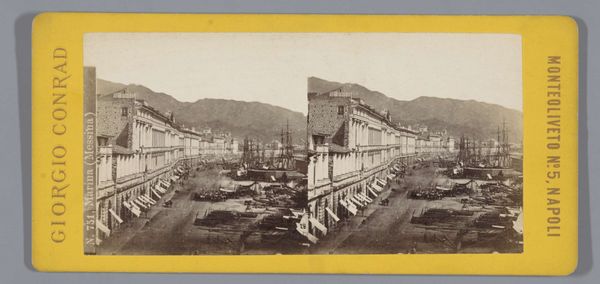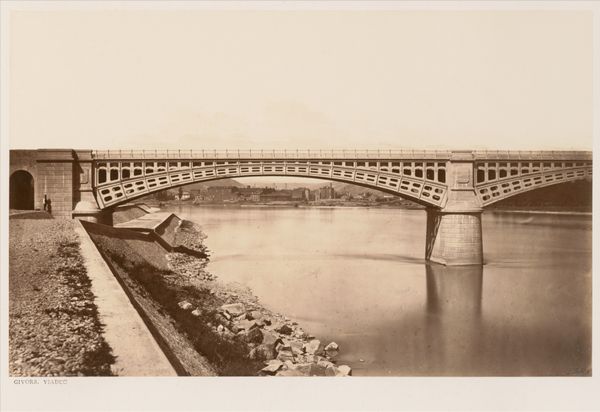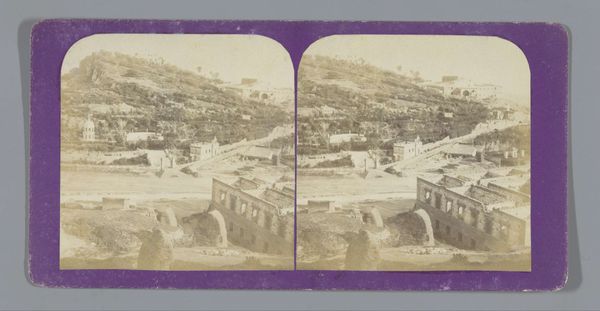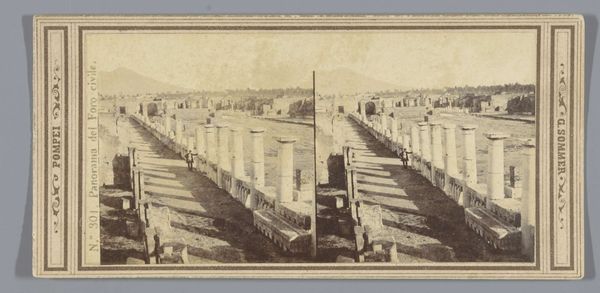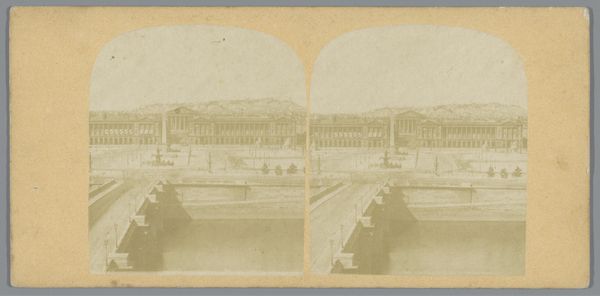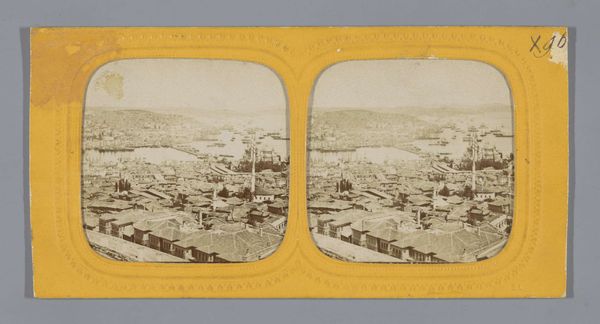
print, photography
# print
#
landscape
#
photography
#
cityscape
Dimensions: height 85 mm, width 170 mm
Copyright: Rijks Museum: Open Domain
Editor: Here we have "Gezicht op de Arno te Pisa," or "View of the Arno in Pisa," a photographic print by Enrico van Lint, dating from around 1850 to 1880. The sepia tones give it a serene, almost timeless quality. It captures the architecture and the river so crisply. What do you see when you look at this, beyond the immediate scene? Curator: Well, seeing a stereoscopic image like this one, mass-produced, transports me to the mid-19th century and the rise of tourism. Pisa, like many European cities, became a spectacle for the burgeoning middle class. How was Pisa being marketed at this time, and how did imagery play a role? Editor: I guess they wanted to show a picturesque and classical view, something 'cultured.' Like the Grand Tour, but made accessible? Curator: Precisely! And Van Lint’s photograph participated in shaping that image. Notice the viewpoint, carefully chosen to present a balanced composition. It reinforces a sense of order, control, a sanitized experience almost. The 'authenticity' of place was commodified and readily consumed. I also notice the photographic technique-- the choice of using stereoscopy -- a medium meant to create an experience of immersion, thus shaping the viewer's perception. Do you think that still holds value for viewers today? Editor: Absolutely, in a different way maybe. We know it’s constructed now, this historical 'view,' but it also tells us something real about the past and its values. Curator: Exactly. It is not only a record of what Pisa looked like, but also how it wanted to be seen. Thinking about the politics of imagery really gives it a different dimension, right? Editor: For sure! It's not just a pretty picture; it’s a cultural artifact loaded with historical context. Curator: Yes, photographs like this one offer a powerful reminder of the intersection between art, tourism, and the construction of cultural identity.
Comments
No comments
Be the first to comment and join the conversation on the ultimate creative platform.
